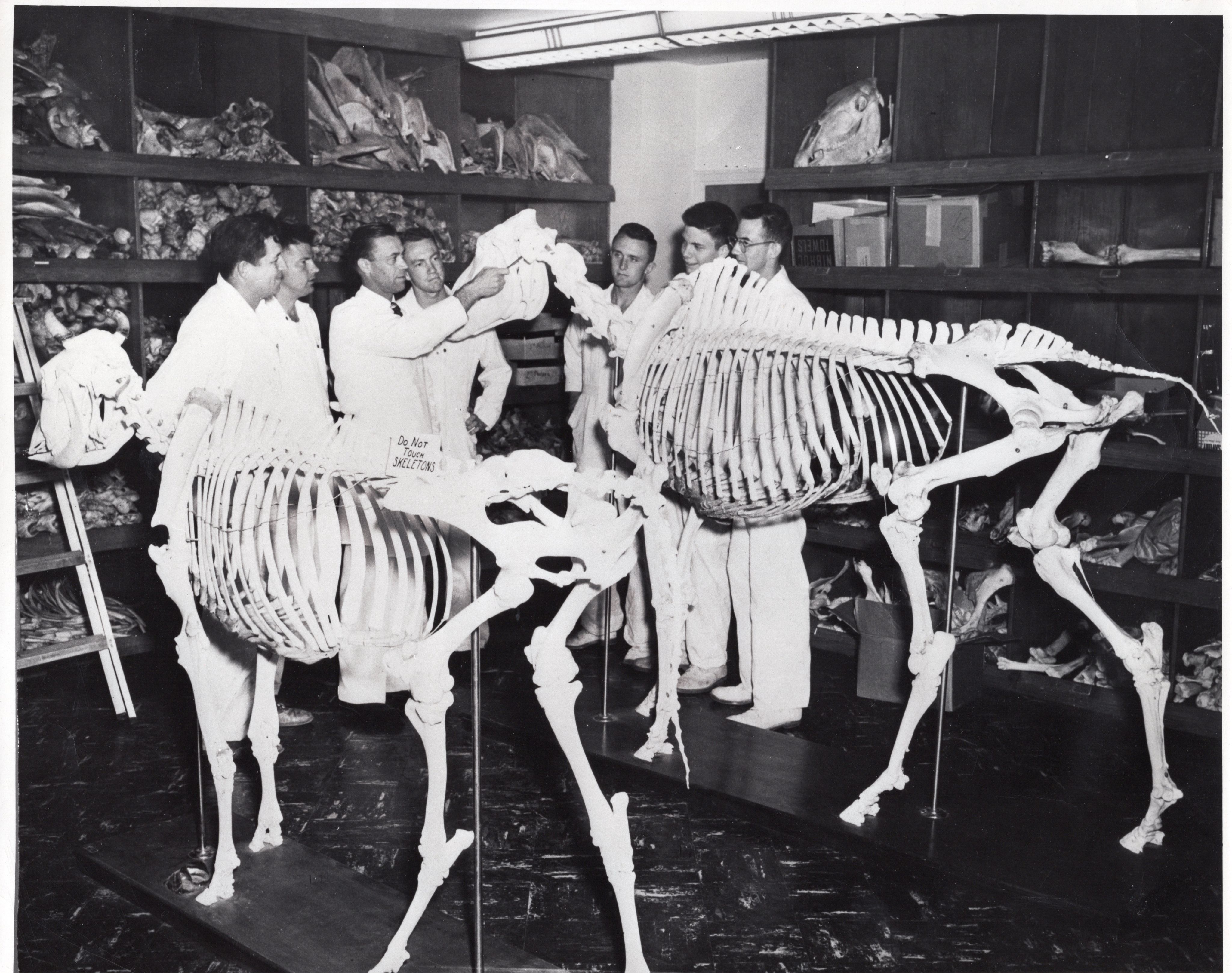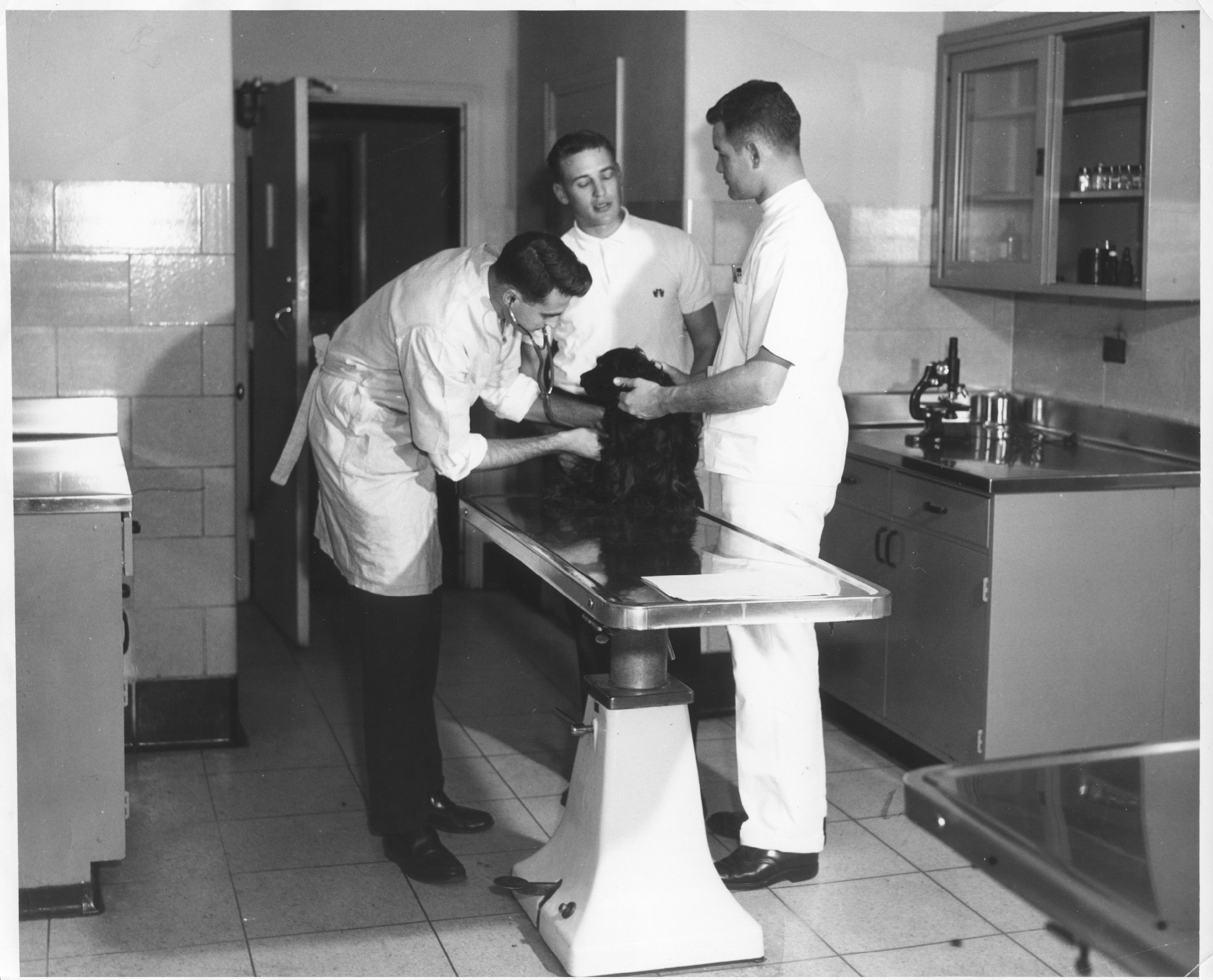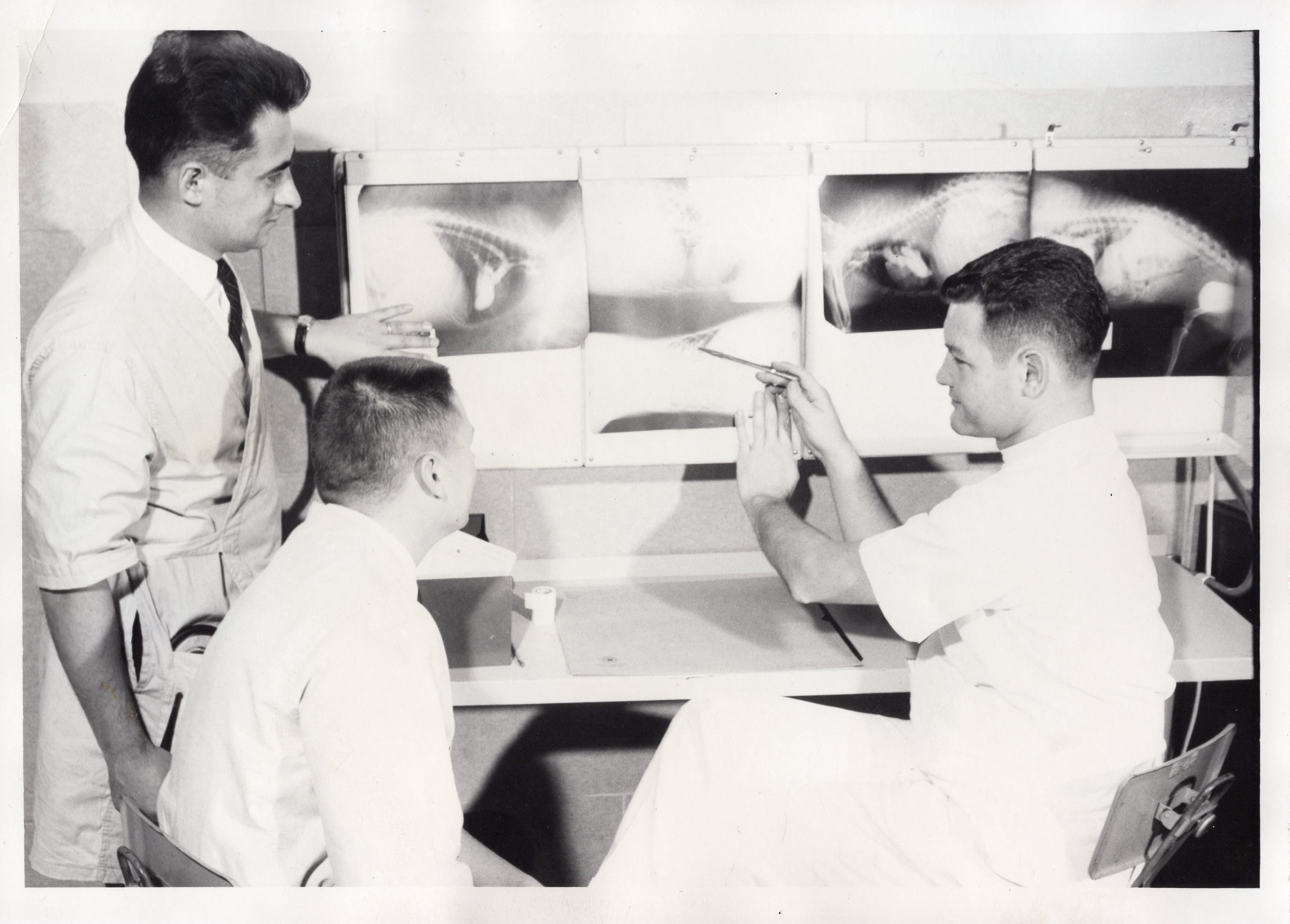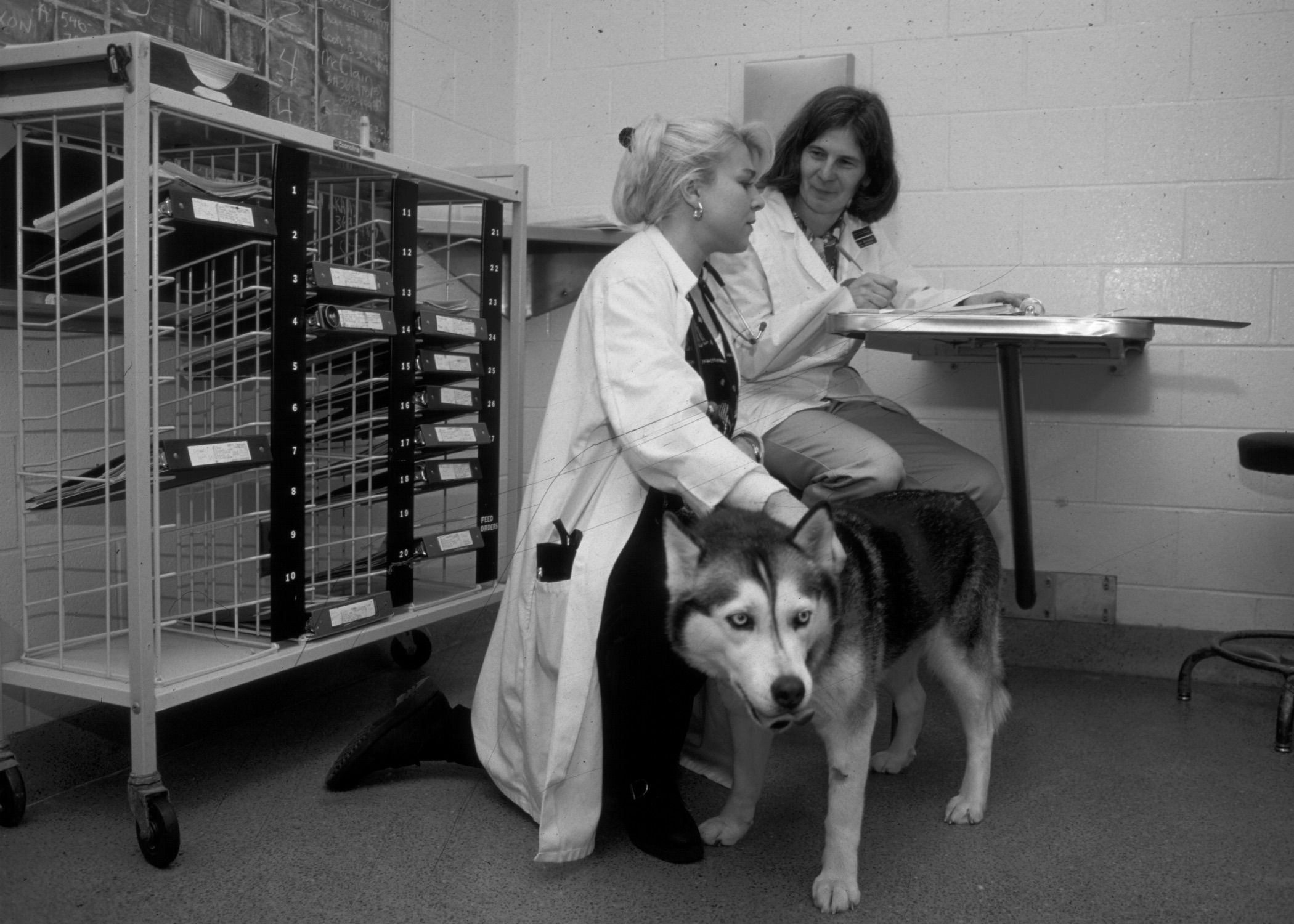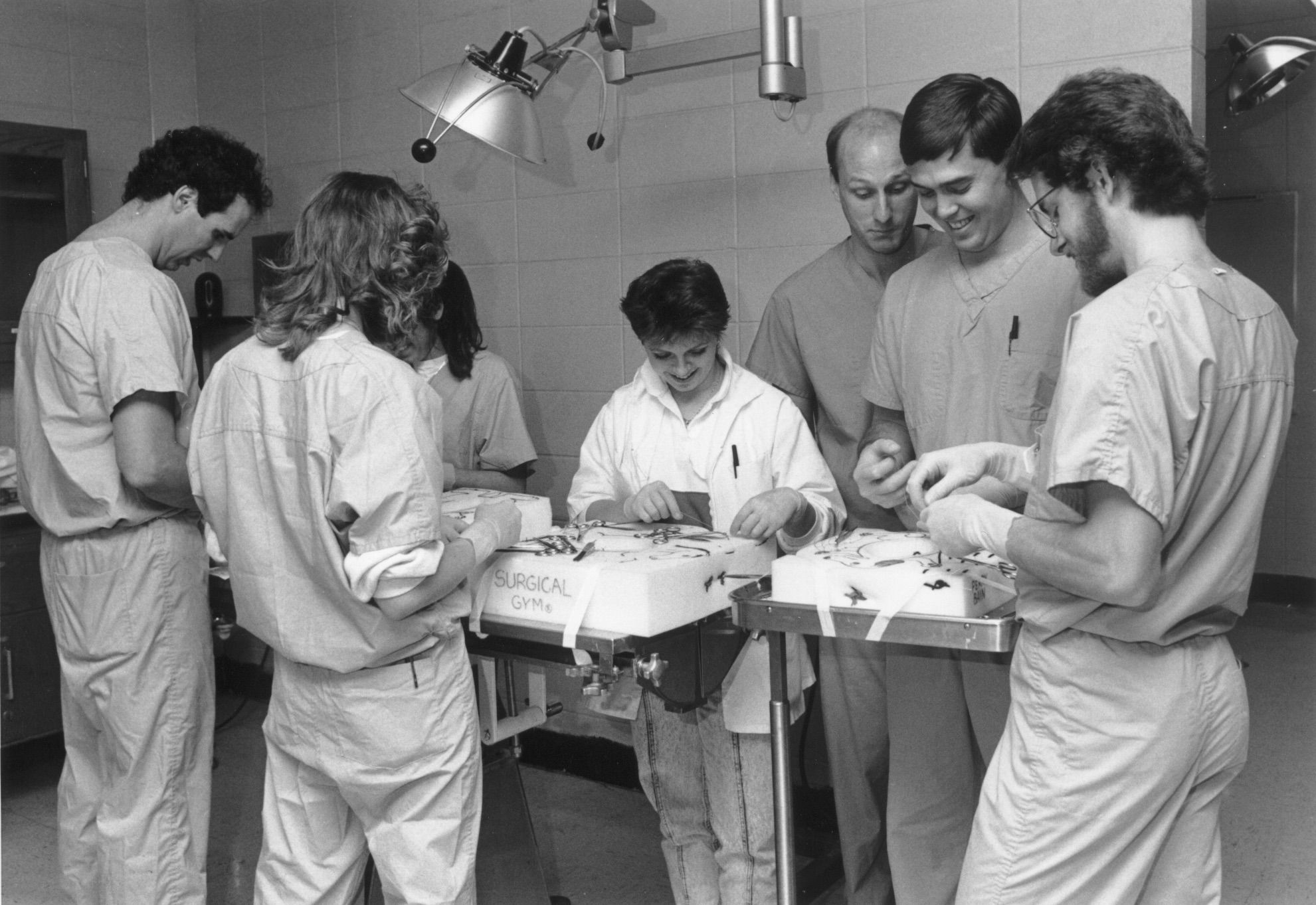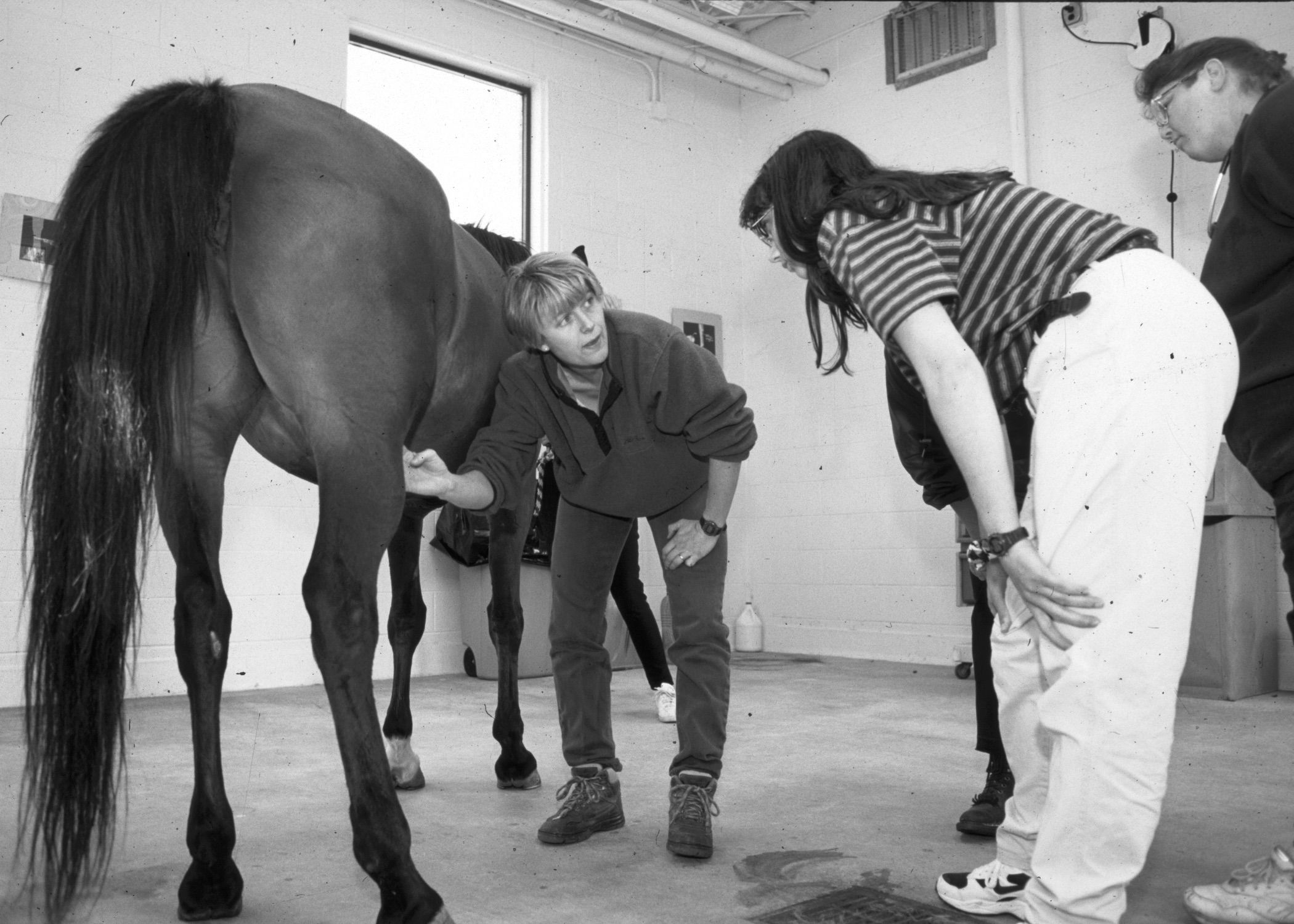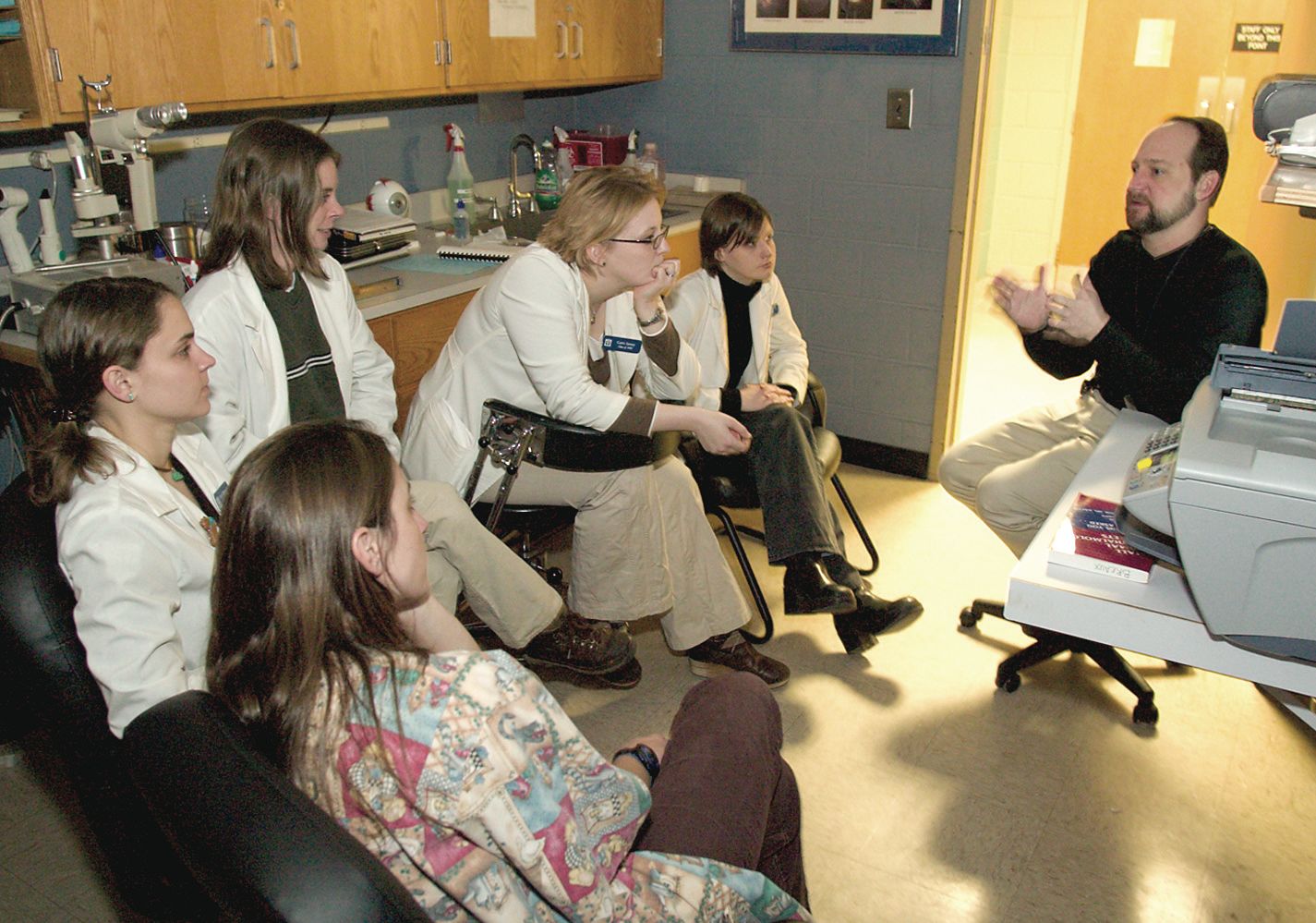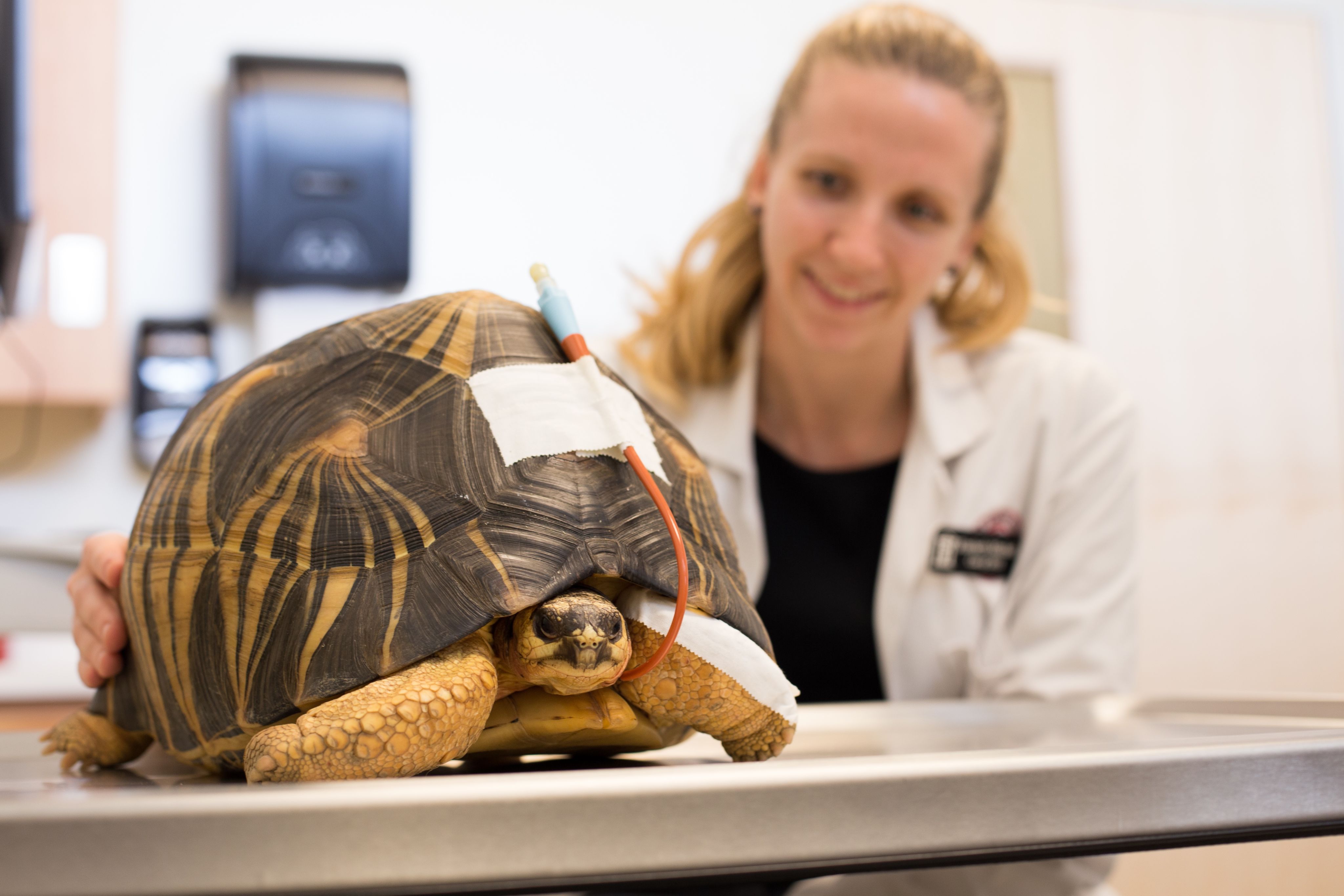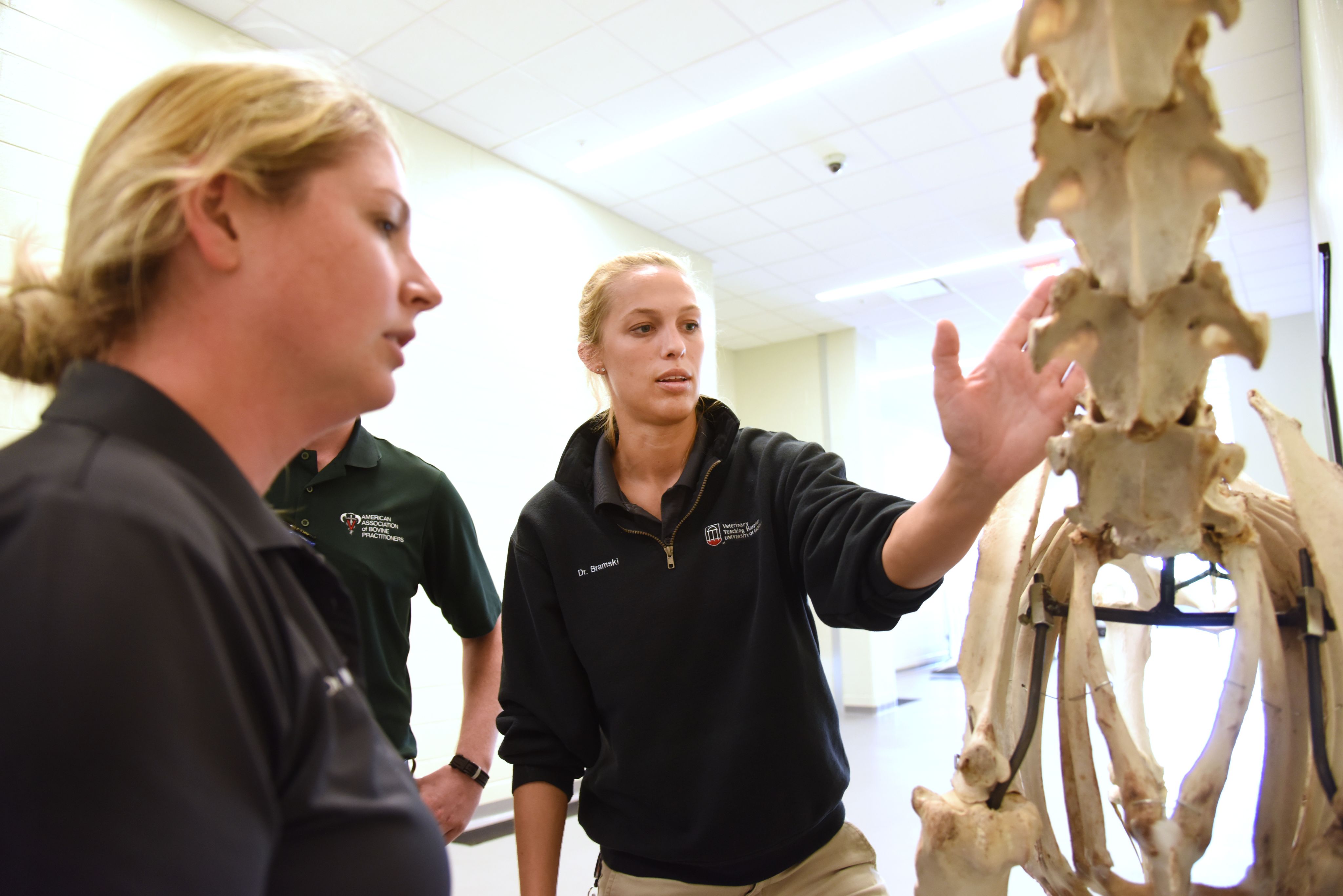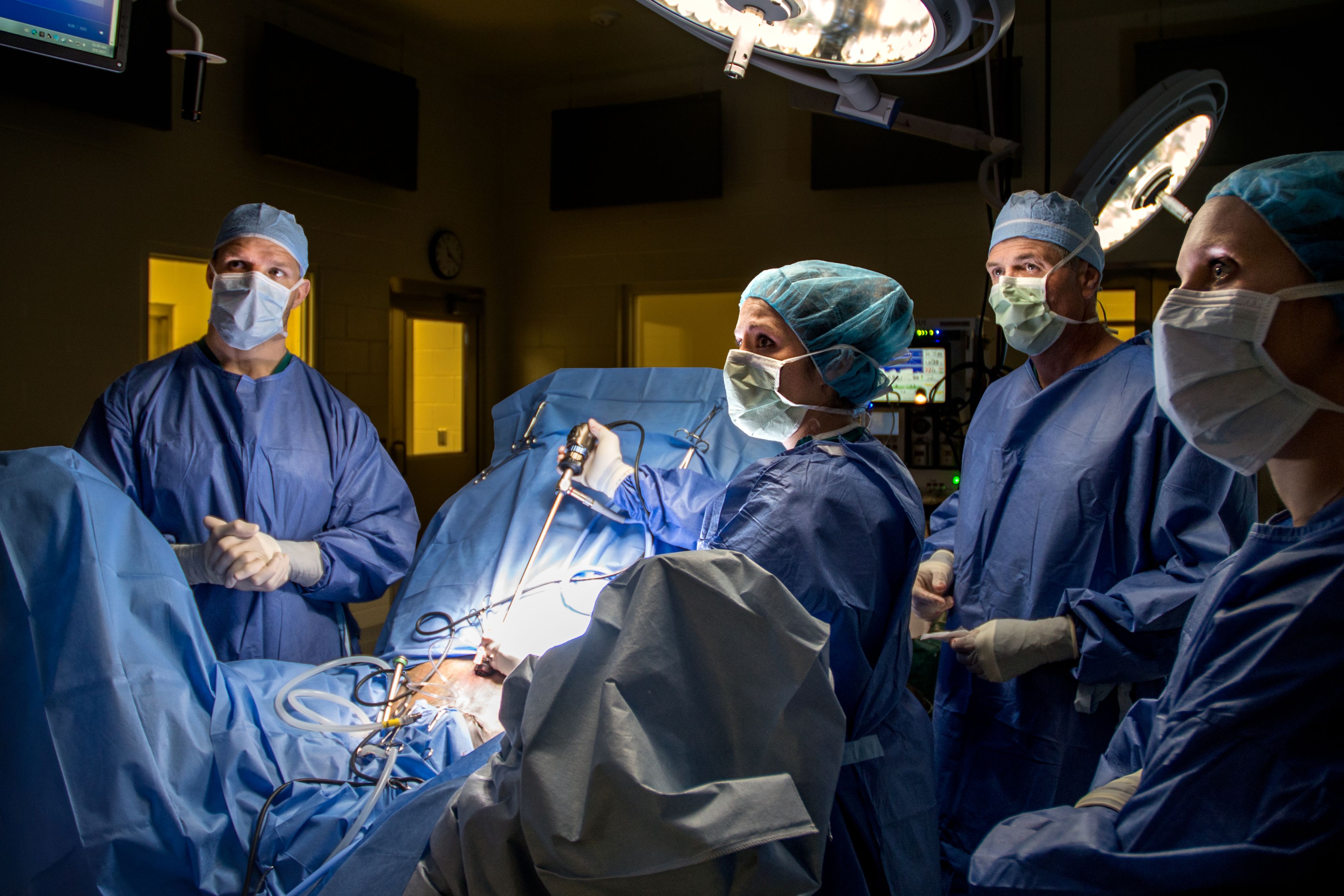VetMed curriculum changes with the times
With many opportunities available to them, UGA students get the benefit of faculty, clinicians and partners who offer knowledge in a diverse range of specialties.
By Amy H. Carter
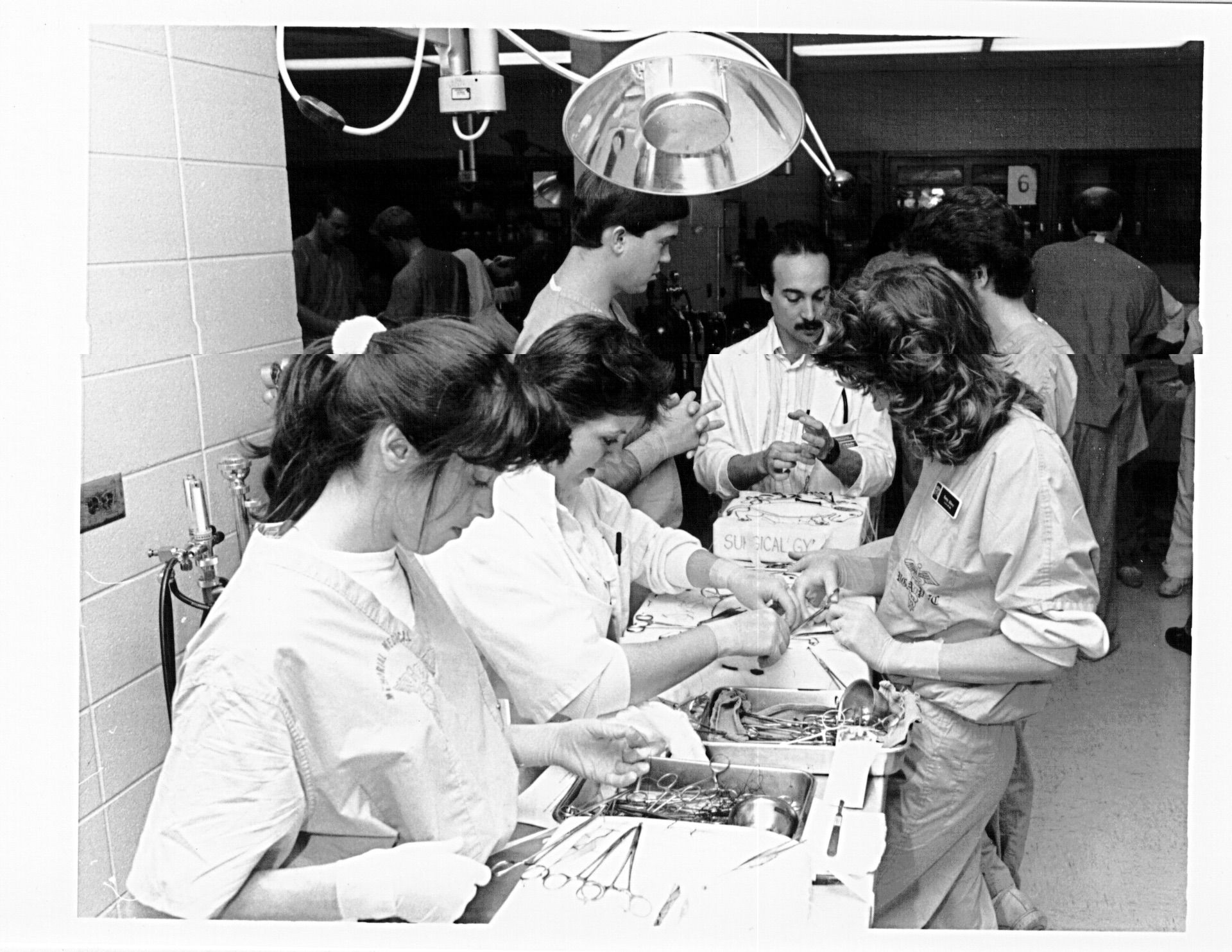

Change is the only constant in veterinary medicine. From new medications, therapies and surgical techniques to novel methods of teaching the veterinarians of tomorrow, the field evolves with time.
The University of Georgia College of Veterinary Medicine has undertaken several updates to its curriculum in the decades since its first class was admitted in 1946. When the Class of 1950 entered vet school, areas of focus for students were limited to animal size: small or large.
Today, the American Veterinary Medical Association recognizes 22 veterinary specialty organizations comprising 48 distinct veterinary specialties. These include divisions most humans will recognize from their interactions with the medical field: cardiology, neurology, sports medicine and rehabilitation, dentistry, and behavioral therapy. Further specificity divides knowledge by species and purpose: fish, avian, exotic companion mammal, canine and feline, reptile and amphibian, equine, and food and fiber.
UGA CVM offers students the opportunity to explore any specialty that piques their interest through classroom instruction with board-certified experts and hands-on learning. Learn-by-doing opportunities happen in the college’s community-based Pet Health Center, in its Veterinary Teaching Hospital, through food animal ambulatory visits, and through externships with practicing veterinarians, many of which are UGA alumni, and organizations such as the Georgia Aquarium and Zoo Atlanta.
Foundations of Veterinary Medicine
A first-year student in the Class of 1950 would start off with didactic classes in anatomy and histology, physiology and pharmacology, followed by animal husbandry, medicine, and surgery in the second and third years. Students entered clinics with externships beginning in the senior year.
A first-year student in the Class of 2025 began vet school with an introduction to the healthy animal, divided by organ systems. In the second year, the curriculum focused on the unhealthy animal, again broken out by organ systems. Additional medicine and surgery courses and electives occurred in the third year, while the fourth year consists of clinical rotations of which up to 12 weeks may be taken as externships. Students may participate in more than 40 different areas of general and specialty practice.
Experiential Learning
Hands-on learning opportunities cover a range of scenarios, from general practice care for companion animals to highly specialized emergency care, production animal medicine for food animal producers, and exotics animal training. UGA’s state-of-the-art teaching hospital offers emergency treatment of injury and critical illness as well as referral treatment of advanced and chronic diseases in animals from all over Georgia, the United States and beyond.
Students are introduced to large animal medicine by accompanying our providers on outcalls to farms and ranches throughout Georgia. While zoos, animal sanctuaries, and horse owners throughout Georgia bring their large animals to the VTH for care, livestock and poultry owners throughout rural Georgia benefit from the farm calls large animal veterinarians on the faculty make to care for their flocks and herds.
Much of rural Georgia lacks adequate veterinary coverage and faculty clinicians are working to fill the gap by exposing students to the field of rural and large animal medicine as a choice for their futures. While providing primary clinical service to clients of the Veterinary Teaching Hospital, these clinicians also work to help students better understand the complicated dynamics of animal production, farm economics, and animal health management so that graduates will be able to enter clinical practice as an asset to food animal producers.
On the small animal side, clinicians, senior veterinary students, and staff at the Pet Health Center serve the community by providing preventive health care and treatment for minor injuries and sickness. Annual checkups, vaccinations, dentistry, nutritional consultations and outpatient surgeries such as spay and neuter procedures are offered at the PHC.
In 2023, UGA CVM introduced a clinical skills curriculum and will increase surgical exposure to better prepare veterinarians for Day-One Competency as the Class of 2027 weaves its way through the curriculum. The college also expanded the professional skills curriculum to enhance students’ confidence in meeting the needs of their clients, whether cultural, financial, emotional or physical.
That change includes the reconfiguration of the Pet Health Center into a Spectrum of Care Clinic which will offer more diagnostic and treatment opportunities in a community-centered small animal clinic setting.
Funded with a $5.2 million grant from The Stanton Foundation under its Spectrum of Care initiative, the PHC expansion will create students-as-doctor opportunities to care for patients in the real-world through all four years of the DVM curriculum.
Creating Confident, Capable Clinicians
Choice, like change, is a hallmark of veterinary medicine. Students can go big with horses, cows, elephants and tigers. They can go small with cats, dogs, parakeets and bees. They can even contribute to the quest to cure the scourges of mankind: cancer, tuberculosis, malaria, Covid, Parkinson’s disease and the flu.
Outside of the formal curriculum, the CVM is making these choices more accessible to more Georgia youth than ever before. In 2020, the school increased the number of slots available in each annual class from 114 to 125 (Class of 2024), and from 125 to 150 in 2021 (Class of 2025).
To encourage rural students to enter the veterinary profession and make them aware of the career choices the field offers, the Tifton Diagnostic and Investigational Laboratory invites students from high schools and colleges in South Georgia for day-long career workshops that include discussions and demonstrations from lab workers and large animal clinicians.
The college also offers an experience called Vet School for a Day for high school students in both Athens and Tifton, as well as a Vet School for a Day experience for undergraduate students. Additionally, VetCAMP offers high school students a more in depth residential veterinary experience on the main campus of UGA.
In partnership with the UGA College of Agricultural and Environmental Sciences, CVM administers a Food Animal Veterinary Incentive Program that offers early admission to the DVM program to students with strong food and fiber animal interests, most of whom come from rural Georgia. These students are expected to maintain the high admission standards for the UGA CVM but also are required to seek food animal oriented experiences throughout their undergraduate education.
Through the Archway Partnership, a university-wide program that offers UGA resources and knowledge to rural communities in need, the CVM is pairing veterinary students with rural mixed and large animal practices. The goal of the program is to help students feel more comfortable with food animal practice and to help address the acute shortage of food animal veterinarians in Georgia.
Alumni have also stepped in to assist new graduates in need of mentorship and advice as they begin their careers in small, mixed and large animal practices. By providing avenues for externships, alumni and other practicing veterinarians are able to mentor our new colleagues and encourage success in practice following graduation.
